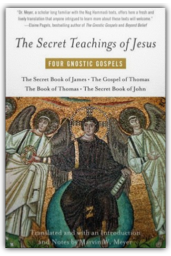
In December 1945, two Egyptian fellahin, digging for natural fertilizer in the Nile River valley unearthed a sealed storage jar. The jar proved to hold treasure of an unexpected sort: a collection of some fifty-two ancient manuscripts, most of which reflect the teachings of a mystical religious movement we call Gnosticism (from the Greek word gnosis, "knowledge"). The texts are also, with few exceptions, Christian documents, and thus they provide us with valuable new information about the character of the early church, and about the Gnostic Christians within the church. 
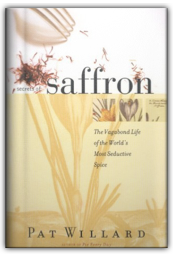
There are few words as evocative as saffron. Over thousands of years it has perfumed the halls of Crete's palaces, made Cleopatra more alluring, and driven crusaders and German peasants to their deaths. While spices that drove adventurers to the ends of the earth, such as cinnamon, mace, and ginger, have become commonplace, saffron remains tantalizingly exotic. Nothing more than the dried stamens of the autumn-flowering purple crocus, it might as well be fairy dust. Resistant to modern horticultural technology, the fragile blossoms must still be gathered by hand from the ancient fields of Iran, Greece, Italy, southern France, and Spain. 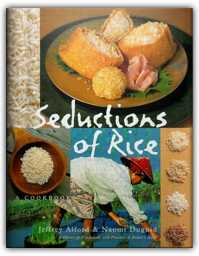
The authors of "Flatbreads and Flavors" set out to find the world's most essential and satisfying food. The glorious result is 200 easy-to-prepare dishes from the world's great rice cuisines. Over 200 photos. 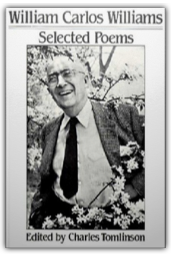
With the publication of this book, Charles Tomlinson's edition of Williams's Selected Poems, New Directions has introduced a gathering larger and more comprehensive than the original 1963 edition. Opening with Professor Tomlinson's superbly clear and helpful introduction this selection reflects the most up-to-date Williams scholarship. In addition to including many more pieces, Tomlinson has organized the whole in chronological order. 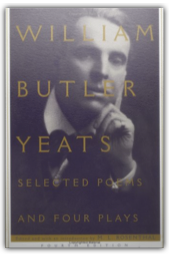
Since its first appearance in 1962, M. L. Rosenthal's classic selection of Yeats's poems and plays has attracted hundreds of thousands of readers. This newly revised edition includes 211 poems and 4 plays. It adds The Words Upon the Window-Pane, one of Yeats's most startling dramatic works in its realistic use of a seance as the setting for an eerily powerful reenactment of Jonathan Swift's rigorous idealism, baffling love relationships, and tragic madness. The collection profits from recent scholarship that has helped to establish Yeats's most reliable texts, in the order set by the poet himself. And his powerful lyrical sequences are amply represented, culminating in the selection from Last Poems and Two Plays, which reaches its climax in the brilliant poetic plays The Death of Cuchulain and Purgatory. |
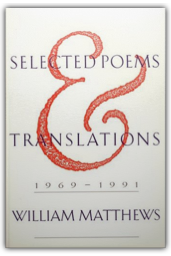
"The road is what the car drinks/traveling on its tongue of light/all the way home." With lines like these William Matthews has created a body of work that stands alone in American poetry. Witty, sophisticated, yet lucid, his poems bring the reader refreshing insights into the everyday world of sports, music, wine, psychology, homes, pets, love, children, and literature. In the course of a brilliant career Matthews has also translated poems from French, Latin, and Bulgarian. In this first selection culled from his complete body of work, readers who have never sampled Matthews's poetry, or who cannot find it in print, will be able to take the measure of one of our most versatile and original poets. Matthews characteristically watches "the lights come on/in the valley, like bright type/being set in another language." Illuminating and thoughtful, his poems speak the truth in a way that prompted Peter Stitt, one of our most respected critics, to write that "William Matthews may be the wisest poet of his generation." In writing about W.H. Auden, Matthews could be describing himself: "The language has used him/ well and passed him through./We get what he has collected." This book, which includes some previously uncollected poems and translations, also draws on nine previous volumes: Ruining the New Road, Sleek for the Long Flight, Sticks & Stones, Rising and Falling, Selected Translations from Jean Follain, Flood, A Happy Childhood (that astonishing collection of poems with titles from Freud), Foreseeable Futures, and Blues If You Want, as well as translations from Martial and contemporary Bulgarian poets. "Our true subject is loneliness," he writes. "We've been divorced 1.5 times/per heart." "But think/with your body: not to be dead is to be/sexual, vivid, tender and harsh, a riot/of mixed feelings, and able to choose." 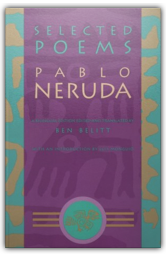
The winner of the 1971 Nobel Prize for Literature, Pablo Neruda is regarded as the greatest Latin American poet of the twentieth century. This bilingual edition makes available a major selection of his poems, both in the original Spanish and impressively rendered into English by his most enduring translator, the poet Ben Belitt” (Robert Creeley). 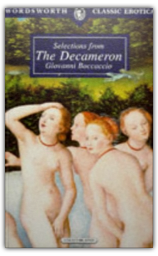
This new selection of the bawdy tales from the world-famous "Decameron" will charm & delight the reader. In the tales, set in 1348, seven young women & three young men decide to escape to the countryside from the Black Death which is ravaging their native city of Florence, Italy. To while away their voluntary exile, they resort to story-telling. Many of the tales were straightforward narratives, but in the age-old manner of young people everywhere, some of the stories were saucy, suggestive or downright rude. A Wordsworth Classic Erotica unexpurgated edition. 
Not too long ago only "bad" girls had a good time in bed. "Good" girls endured — and wondered what they were missing. 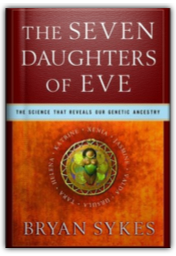
The Seven Daughters of Eve is a thrilling work of science that reveals how biological research can enrich our tangled lives. It is a book that chronicles many of the most exciting developments in genetics over the past decade by a man who is not only a brilliant scientist but also a gifted and thoroughly engaging writer. It ultimately demonstrates how much more we still have to discover about the absorbing story of human evolution. One of the most dramatic stories of genetic discovery since James Watson's The Double Helix—a work whose scientific and cultural reverberations will be discussed for years to come. In 1994 Professor Bryan Sykes, a leading world authority on DNA and human evolution, was called in to examine the frozen remains of a man trapped in glacial ice in northern Italy. News of both the Ice Man's discovery and his age, which was put at over five thousand years, fascinated scientists and newspapers throughout the world. But what made Sykes's story particularly revelatory was his successful identification of a genetic descendant of the Ice Man, a woman living in Great Britain today. How was Sykes able to locate a living relative of a man who died thousands of years ago? In The Seven Daughters of Eve, he gives us a firsthand account of his research into a remarkable gene, which passes undiluted from generation to generation through the maternal line. After plotting thousands of DNA sequences from all over the world, Sykes found that they clustered around a handful of distinct groups. Among Europeans and North American Caucasians, there are, in fact, only seven. This conclusion was staggering: almost everyone of native European descent, wherever they may live throughout the world, can trace their ancestry back to one of seven women, the Seven Daughters of Eve. Naming them Ursula, Xenia, Helena, Velda, Tara, Katrine, and Jasmine, Sykes has created portraits of their disparate worlds by mapping the migratory patterns followed by millions of their ancestors. In reading the stories of these seven women, we learn exactly how our origins can be traced, how and where our ancient genetic ancestors lived, and how we are each living proof of the almost indestructible strands of DNA, which have survived over so many thousands of years. Indeed, The Seven Daughters of Eve is filled with dramatic stories: from Sykes's identification, using DNA samples from two living relatives, of the remains of Tsar Nicholas and Tsaress Alexandra, to the Caribbean woman whose family had been sold into slavery centuries before and whose ancestry Sykes was able to trace back to the Eastern coast of central Africa. Ultimately, Sykes's investigation reveals that, as a race, what humans have in common is more deeply embedded than what separates us. |

Raschke-Agostini Library
Collection Total:
1463 Items
1463 Items
Last Updated:
Jan 16, 2011
Jan 16, 2011


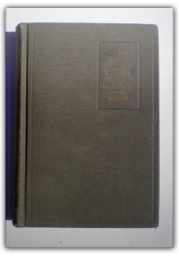

 Made with Delicious Library
Made with Delicious Library